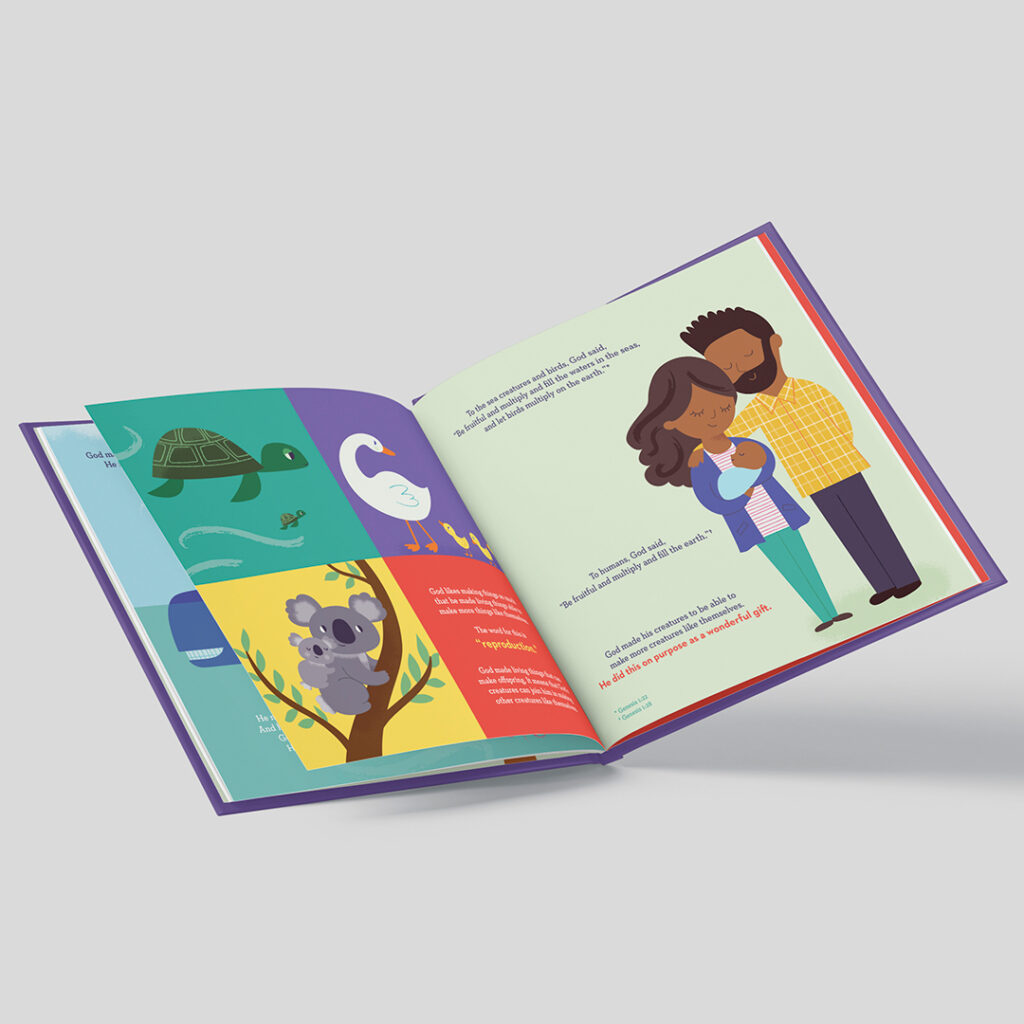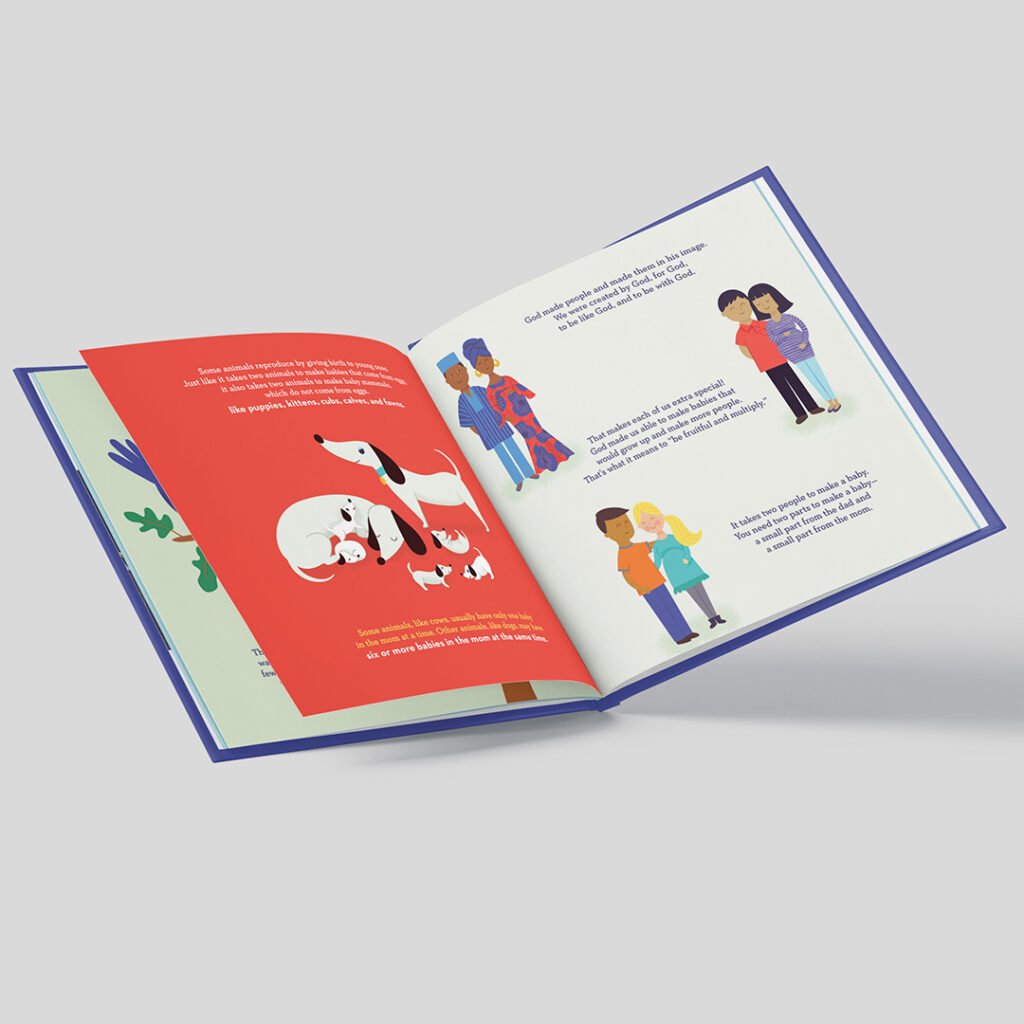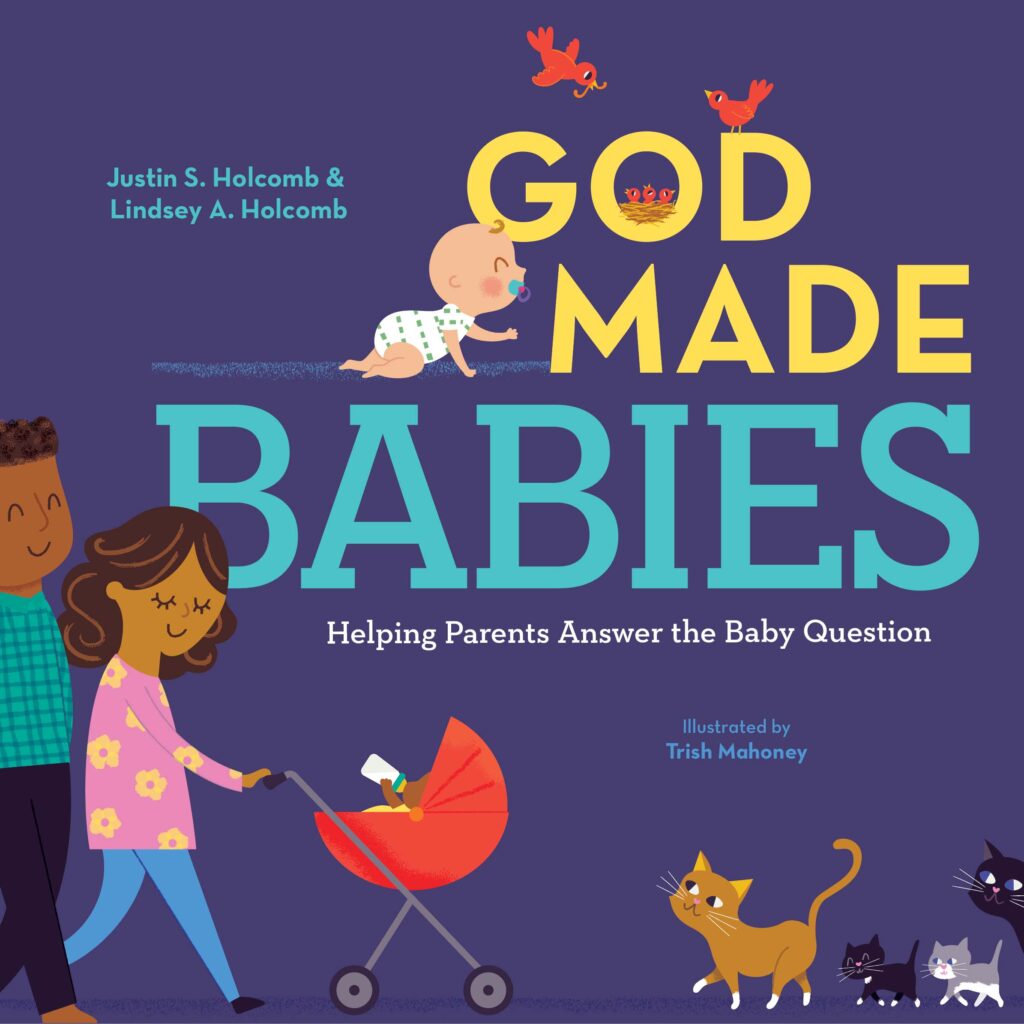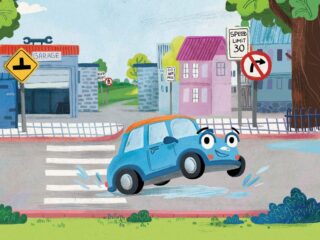“Where do babies come from?” This common question all too often leaves parents perplexed about what to say and when to say it. In God Made Babies: Helping Parents Answer the Baby Question, Justin and Lindsey Holcomb offer an answer to the often-dreaded, sometimes awkward question in a commonsense, biblical way.
Drawing from the story of creation and how God made the living world to reproduce, God Made Babies helps children ages 4–9 to understand the gift of reproduction in the light of God’s goodness and care.
In this interview, the Holcombs share more about having this important conversation in an age-appropriate way.
Q: In the introduction you write that contrary to popular thought, when kids ask about where babies come from, they aren’t asking about sex. If that’s the case, what are they asking about?
When children ask the baby question, they want to know where they came from before they were born. Knowing why they are asking can free us up to treat it like other conversations we have with our children. The question is a healthy and normal part of a child’s development. Many children around the age of three or four start to notice pregnant women, which then sparks their curiosity and questions. Children can understand that reproduction is a natural part of life, and that God made all living things to reproduce.
We get to tell our children that God planned to make them because he specifically wanted them in his world. That’s a conversation parents are privileged to have repeatedly. Please don’t treat this topic like a one-time conversation—such as “The Talk”—that you never revisit with your child. Instead, make an open-ended invitation for them to ask you questions, and for you to ask what they know and think.
Q: You also make the point that the book is about reproduction rather than sex. Why is that distinction important?
Focusing on reproduction connects the conversation to God and his creation of all things. The foundation of these conversations is the doctrine of creation. Reproduction is a larger focus. Focusing on the specifics of sex can make the discussion feel clinical, mechanical, and highlights the act of sex.
Reproduction is about God wanting his world to be filled with more of the things he enjoyed creating. God made living things that can make offspring. It means that God’s creatures can join him in making other creatures like themselves. Focusing on reproduction emphasizes the wonder and awe of God and how he created all things. This is a wonderful context for children to learn more about how God made it possible for babies to be made.
Q: What makes God Made Babies unique in how it approaches the answer to the baby question?
There are numerous things that make God Made Babies unique. First, the illustrations by Trish Mahoney are spectacular. We have worked with her on all three of our children’s books because great illustrations are essential to engage a child’s imagination and to capture their attention.
The content of the book highlights God’s joy in creating and that sets the tone for the discussion about where babies come from. We emphasize that God is creative and likes to makes all sorts of different things. As a matter of fact, God likes making things so much that he made living things able to make more things like themselves.
In addition to help parents explain where babies come from, we also ask and answer the top questions children have about babies in general, such as:
- How long are babies inside the mom?
- What do babies do inside the mom?
- How does a baby get out of the mom’s body?
- Can I have a baby grow inside of me too? Can I help make a baby?
Also important is that, similar to our other children’s books, we write two sections to parents and caregivers. The first is a letter to the parents to encourage them and highlight the importance of them being the trusted source for their children to come to on important topics. The second is a section at the end of the book with very practical suggestions for parents to consider when having these conversations.
Q: God Made Babies eases into talking about human babies. What progression does the book take to get to humans?
Since we start with God creating and making living things able to make more living things, we want to show some of the other creatures that reproduce before we talk about human babies.
We begin with flowers because God made flowers able to make more flowers. By describing how new flowers are made, the book introduces key ideas that are important for talking about how babies are made. For example, flowers have female and male parts, and both are necessary for making new flowers. Starting with flowers helps introduce the concept of seeds into the discussion of reproduction.
The next step is to discuss how God made some animals to make babies by laying eggs. Just like it takes two flowers to make new flowers, it also takes two animals to make babies that come from eggs. This helps introduce the idea of eggs into the discussion.
With all of that in place, the next example of reproduction is to look at how God made some animals that carry their babies in the mom and give birth to young animals. It also takes two animals to make baby animals that do not come from eggs but grow inside the mom.
By the time we get to human babies, the stage has already been set and it feels like a natural progression to communicate that it takes two people to make a baby by using a small part from the dad (seed) and a small part from the mom (egg). The most detail used in the book is this: a sperm from the dad and an egg from the mom join together in the mom’s body. We stop there because we think it is important for parents to decide how much detail they want to provide and when.
Q: Scripture is incorporated throughout the book, even in the middle of describing development in the womb. How can parents take advantage of the opportunity to go deeper into God’s Word with their children?
We want the enable parents to frame this conversation with God’s Word, so it is presented in the way God relates to his creation. The theme verse for the book is: “God blessed them and said to them, ‘Be fruitful and multiply and fill the earth’” (Genesis 1:28). Our retelling of God’s enjoyment of creating follows the creation account in Genesis as well. In addition to Genesis 1:28, God also told the sea creatures and birds: “Be fruitful and multiple and fill the waters in the sea, and let birds multiply on the earth.” This reminds us that reproduction is God’s creative idea and that he invites the living creatures he made to join him in making more things.
In the middle of the book, when we address how babies live and grow in the mom’s womb, we celebrate Psalm 139:13–16: “For you created my inmost being; you knit me together in my mother’s womb. I praise you because I am fearfully and wonderfully made; your works are wonderful, I know that full well. My frame was not hidden from you when I was made in the secret place, when I was woven together in the depths of the earth. Your eyes saw my unformed body; all the days ordained for me were written in your book before one of them came to be.”
We want parents to be able to celebrate that God made them on purpose and that he planned for their life. It is important for children to know that God made them on purpose because he wanted them in his world and that he knew all about them and was excited for them to be born. What a wonderful thing for children to hear their parents to say.
By incorporating Scripture like this, our goal is to encourage parents to repeat to their children that every baby is a gift from God, and they are they God’s special gift to their family.
Q: What are some things a parent can do to create a safe atmosphere for their children to always come to them with questions?
Being open and available for conversations with our children is very important. One of the main things parents can do to create a safe atmosphere is to make the conversations natural and normal. Find ways to talk about this subject while eating dinner, taking a walk, visiting the zoo, driving somewhere, etc. If the conversations are natural and normal, that will help your child feel comfortable with other questions or concerns that arise.
Another thing is to keep your response simple and short. Sometimes a few sentences are all that’s needed. Often the simplest explanation is sufficient. Keep it simple and see if they have any follow-up questions. If they want more information, they will let you know—now or later.
Something we have found helpful is to ask what they think. Asking your child what they think can be a fruitful launching point for a more helpful discussion.
Q: Can you tell us more about the back section of God Made Babies that is written to parents?
At the end of the book, in the section, “Things to Consider When Asked the Baby Question,” we offer very practical suggestions to parents.
First, we offer three different stages of explaining how babies are made. Which stage of detail parents address depends on what they determine is age-appropriate and what the child already knows. The younger the child, the less detail they need. How much detail parents want to provide and when is up to the parents and should be based on previous conversations with the child.
Second, we offer ten practical suggestions for when parents are asked the baby question. Some of these are things we learned firsthand as parents, and some are things we wish we had known or been told. We intend God Made Babies to be a resource for parents and children together, but we also want to come alongside parents to offer suggestions that are practical, informed, biblical, honest, and age appropriate.
Q: When a child comes to a parent with a question, why is it important for a parent to ask their child some questions, both before and after the conversation?
Asking questions before answering your child’s question helps determine the context of their question. Since it is a conversation, it will feel normal to the child if you ask them questions. The answer may provide context for their question and help you know how to focus your response. Did they hear something at school? Did they see a pregnant woman? Did they read something in a book? Are they just very observant or curious?
Asking questions after the conversations honors them and helps you gauge if more needs to be said and if you communicated what you wanted to clearly. Asking your child what they think can be a fruitful launching point for a more helpful discussion in the moment and also for future conversations.
Q: One of your tips is to not make things weird when these kinds of questions come up. Here’s a question kids of all ages can appreciate: what can parents do to be less weird?
We tell parents not to make it weird because young children do not know that asking where babies come from can be awkward for you. For them, asking about reproduction is no different from asking any other question. Try to be casual and straightforward in your response. How you respond communicates just as much as what you say. Try to stay calm and not reveal shock, embarrassment, concern, or frustration. Your discomfort may make your child feel shame for asking a normal question.
Answering the baby question is an opportunity toteach your child the proper names of body parts related to reproduction. Focus on the parts they can see—like the penis and vagina. Using accurate terms for body parts can avoid unnecessary confusion. For example, babies grow in the uterus or womb. If you use terms like “stomach” or “tummy,” it can be confusing since that is where food goes. Explain any words your child does not know. This keeps them from feeling overwhelmed with information and helps keep the conversation from feeling abstract.
God Made Babies: Helping parents Answer the Baby Question
Justin and Lindsey Holcomb tackle the tough question “Where do babies come from?” in a common sense, biblical way. They help parents start the conversation with their children about reproduction by giving them the basic tools to guide them—including specific biblical content and age-appropriate ways of talking to children.








